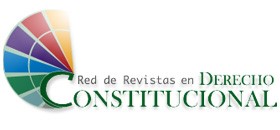Raza, género y constitucionalismo: El pensamiento antiesclavista y feminista de Thomas Paine. (RI §418022)

Race, gender and constitutionalism: the antislavery and feminist thinking of Thomas Paine -
Nilda Garay Montañez
Thomas Paine estuvo en el centro de las dos revoluciones del siglo XVIII que consolidaron el constitucionalismo liberal. Su pensamiento fue considerado revolucionario en su época porque no solo criticaba la monarquía sino también la desigualdad económica; la propiedad privada; la esclavitud y la opresión de las mujeres. Este trabajo analiza dos de sus ensayos donde critica dos factores estructurales del constitucionalismo: el sexismo y el que actualmente conocemos como racismo. En “African Slavery in America” y “An Occasional Letter on the Female Sex” publicados en 1775, trata cuestiones como la racial y de género testimoniando las contradicciones en la construcción del constitucionalismo. Tras más de doscientos cuarenta años dichos factores persisten continuando vigentes las denuncias y las propuestas de Paine.
I. RACISMO Y SEXISMO. EL ESTADO DE LA CUESTIÓN.- II.RAZA Y GÉNERO EN LA MODERNIDAD Y GÉNESIS DEL CONSTITUCIONALISMO: 1. Teorías políticas y la huella de la racialización. 2. Teorías políticas y la impronta del sexismo.- III. EL CONSTITUCIONALISMO ANTIESCLAVISTA: 1. El estatuto jurídico del esclavo. 2. Esclavitud y derechos: Habeas Corpus.- IV. PAINE Y LA ESCLAVITUD. “AFRICAN SLAVERY IN AMERICA”: 1. Paine y sus propuestas para superar la esclavitud.- V. CONSTITUCIONALISMO Y FEMINISMO: 1. El estatuto jurídico de las mujeres.- VI. PAINE Y EL GÉNERO: “AN OCCASIONAL LETTER ON THE FEMALE SEX”: 1. Vindicación de las mujeres en el pensamiento de Paine.- VII. CONCLUSIONES.- VIII. BIBLIOGRAFÍA.
Thomas Paine fully lived the two Revolutions of the 18th century that consolidated liberal constitutionalism. His thinking was considered revolutionary at the time for it not only criticized monarchy but also economic inequality; private property; slavery, and the oppression of women. This work analyzes two of his essays in which he criticizes two structural factors of constitutionalism: sexism and what we at present call racism. In “African Slavery in America” and “An Occasional Letter on the Female Sex”, published in 1775, he treats such matters as race and gender, as a testimony of the contradictions in the construction of constitutionalism. After more than two hundred and forty years, those factors persist and Paine’s criticism and proposals remain current.
I. RACISM AND SEXISM. THE STATE OF THE MATTER.- II. RACE AND GENDER IN MODERNITY AND GENESIS OF CONSTITUTIONALISM: Political theory and the footprint of racialization. 2. Political theory and the mark of sexism.- lll. Antislavery constitutionalism: 1. The legal status of the slave. 2. Slavery and rights: Habeas Corpus.- lV. PAINE AND SLAVERY. “AFRICAN SLAVERY IN AMERICA”: 1. Paine's proposals to overcome slavery.- V. CONSTITUTIONALISM AND FEMINISM: 1. The legal status of women.- Vl. PAINE AND GENDER: “AN OCCASIONAL LETTER ON THE FEMALE SEX”: 1. Vindication of women in Paine's thinking.- Vll. CONCLUSIONS.- Vlll. BIBLIOGRAPHY.

 CONSEJO EDITORIAL / EDITORIAL BOARD
CONSEJO EDITORIAL / EDITORIAL BOARD